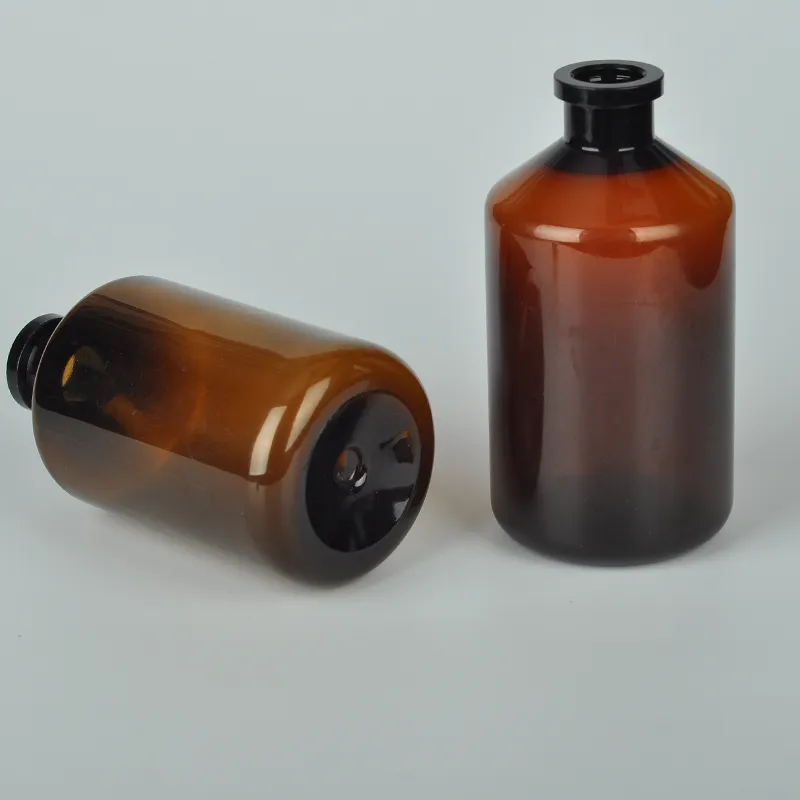300ml plastic juice bottles for convenient hydration on the go
The Rising Popularity of 300ml Plastic Juice Bottles
In recent years, there has been a noticeable shift towards healthier lifestyles, leading to an increase in the consumption of fresh juices. As consumers seek convenient ways to incorporate nutritious beverages into their daily routines, the demand for practical packaging solutions has surged. One such solution that has gained significant traction is the 300ml plastic juice bottle. This article explores the benefits, environmental considerations, and market trends associated with these versatile containers.
Convenience and Portability
The 300ml plastic juice bottle strikes an ideal balance between size and portability. It is compact enough to be easily carried in bags, lunch boxes, or even pockets, making it an excellent choice for people on the go. Whether you're heading to work, hitting the gym, or enjoying a picnic, this bottle size provides the perfect serving of juice—enough to quench your thirst without overwhelming you. Furthermore, the lightweight nature of plastic makes it an attractive option for both manufacturers and consumers.
Safety and Durability
Plastic bottles have long been favored for their durability and ease of use. The 300ml plastic juice bottles are often made from high-density polyethylene (HDPE) or polyethylene terephthalate (PET), which are food-safe materials known for their strength and resistance to breakage. Unlike glass, plastic doesn't shatter upon impact, reducing the risk of injury or mess. This resilience is particularly advantageous for families with young children, outdoor events, or active lifestyles.
Cost-Effectiveness
From a business perspective, the use of plastic bottles can be more cost-effective compared to glass or aluminum alternatives. The manufacturing and transportation costs associated with plastic containers are generally lower due to their lighter weight and reduced risk of damage during transit. For consumers, this cost-effectiveness often translates into lower prices for juice products, making healthy choices more accessible to a broader audience.
Customization and Branding
300ml plastic juice bottles

The 300ml plastic juice bottle also offers brands extensive opportunities for customization. Manufacturers can easily print vibrant colors, eye-catching designs, and nutritional information directly onto the bottle, making it an effective marketing tool. As branding becomes increasingly important in a crowded marketplace, businesses are keen to invest in visually appealing packaging that communicates their values and attracts consumers. The versatility of plastic bottles allows for unique shapes and sizes, further enhancing a brand's identity.
Environmental Considerations
Despite the numerous advantages, the environmental impact of plastic bottles cannot be ignored. Concerns regarding plastic waste have prompted increased scrutiny by environmentally conscious consumers and regulatory bodies alike. As a result, many manufacturers are actively working to improve the sustainability of their products. This includes the introduction of bottles made from recycled materials, as well as developing biodegradable options. Additionally, many brands are implementing take-back programs or incentivizing recycling to encourage responsible disposal practices among their customers.
Future Trends
Looking ahead, the juice market is expected to continue evolving, with 300ml plastic juice bottles maintaining a significant presence. Consumers are becoming more informed about health and wellness, and the demand for organic, cold-pressed, and functional juices is on the rise. This trend will likely drive innovation in packaging, with brands seeking out environmentally friendly materials and practices that appeal to eco-conscious consumers.
Furthermore, technology advancements may pave the way for smarter packaging solutions, such as bottles with QR codes that allow consumers to trace the source of their juice or access additional product information.
Conclusion
In summary, 300ml plastic juice bottles are becoming an essential component of the modern beverage landscape. Their convenience, safety, and cost-effectiveness make them an attractive option for both consumers and manufacturers. With ongoing efforts to address environmental concerns and cater to changing consumer preferences, the future of plastic juice bottles appears promising. As we continue to balance the desire for healthy living with ecological responsibility, these bottles are set to play a vital role in the evolution of juice consumption.
-
Aesthetic Makeup Spray Bottles | Fine Mist Empty RefillableNewsAug.19,2025
-
White Plastic Veterinary Vaccine Vials | Lab Liquid BottlesNewsAug.18,2025
-
Plastic Medicine Liquid Bottle: Secure Flip Top Drug VialsNewsAug.17,2025
-
Durable 250ml Blue Plastic Vaccine Vial for Lab & Vet UseNewsAug.16,2025
-
Sterile Virus Sample Tubes: Secure & Reliable Specimen CollectionNewsAug.15,2025
-
White 250ml Plastic Vaccine Vial for Lab & Vet MedicineNewsAug.14,2025
























